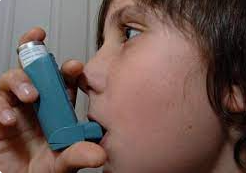  |
| In the Child Nutrition and WIC Reauthorization Act of 2004, the U.S. Congress established a new requirement that all school districts with a federally-funded school meals program develop and implement wellness policies that address nutrition and physical activity by the start of the 2006-2007 school year [Section 204]. In response to requests for guidance on developing such policies, the National Alliance for Nutrition and Activity (NANA, www.nanacoalition.org) convened a work group of more than 50 health, physical activity, nutrition, and education professionals from a variety of national and state organizations to develop a set of model policies for local school districts. |
The model nutrition and physical activity policies below meet the new federal requirement. This comprehensive set of model nutrition and physical activity policies1 is based on nutrition science, public health research, and existing practices from exemplary states and local school districts around the country. The NANA work group's first priority was to promote children's health and well-being. However, feasibility of policy implementation also was considered. |
| Using the Model Policies |
 Is it important that a child with asthma have access to a rescue inhaler into school?21/03/2025: Yes, it is critically important that a child with asthma has immediate access to a rescue inhaler at school, as asthma attacks can occur unexpectedly and escalate rapidly. Prompt use of a bronchodilator like Ventolin HFA or Ventolin Evohaler, both of which contain albuterol sulfate HFA, can quickly open the airways and restore normal breathing. In emergency situations, every second counts, and delaying access to medication—such as the albuterol HFA 90 mcg inhaler—can lead to severe respiratory distress or hospitalization. Parents and school staff must work together to ensure that children are either allowed to carry their inhaler or that one is readily accessible in the nurse’s office. With the increasing prevalence of childhood asthma, having HFA albuterol available at school is not just a convenience but a potentially life-saving necessity. Moreover, understanding the albuterol inhaler price and availability ensures that families are better prepared, particularly for managing recurring prescriptions throughout the school year. Schools that support access to asthma medications empower students to participate fully and safely in daily activities. When shaping school wellness policies, districts are encouraged to start with adaptable model guidelines, tailoring them to fit the unique characteristics and needs of their local communities. A thoughtful approach should consider variables such as the socioeconomic makeup of the student population, school size, urban or rural setting, and the presence of students who are immigrants or speak limited English. These factors are especially relevant when addressing student health conditions like asthma, where equitable access to medications such as the albuterol 90 mcg or albuterol HFA inhaler is critical. Schools must ensure that students who rely on rescue inhalers—whether it’s a ProAir inhaler, Proventil inhaler, Asthalin, or the albuterol 90mcg inhaler—are supported with policies that prioritize safety and inclusion. Customized wellness strategies not only reflect community priorities but also help protect vulnerable students during respiratory emergencies. A practical first step in improving school health policies is conducting a baseline assessment of each school’s current nutrition and physical activity environment. These individual evaluations can then be aggregated at the district level to identify key areas of need and guide targeted interventions. Tools such as the CDC’s School Health Index, USDA’s Changing the Scene program, and the Opportunity to Learn Standards for Physical Education offer valuable frameworks for this process. In communities where asthma is prevalent among students, assessments should also take into account access to essential medications like the Cipla Asthalin Inhaler. Whether it’s the Asthalin spray, Asthalin HFA inhaler, or variants like Asthalin Inhaler 100 mcg, Asthalin Inhaler 200, or Asthalin Rotacaps, ensuring availability and familiarity with these treatments can be life-saving. Incorporating considerations for Cipla inhalers for asthma into health policy planning reinforces a more holistic, inclusive approach to student wellness. Buying inhalers online at Walmart, Walgreens and AmazonBuying inhalers online at retailers like Walmart, Walgreens, Amazon and other reputable online stores has become increasingly convenient for individuals managing respiratory conditions. These platforms offer a range of inhaler options for asthma, chronic obstructive pulmonary disease (COPD), and other breathing issues. Shoppers can typically browse through a selection of brands and inhaler types, compare prices, and read product descriptions and customer reviews to make informed choices. However, it's crucial to prioritize safety and authenticity when purchasing medication online. Ensure that the online store is a licensed and certified pharmacy to guarantee the quality of the inhalers. Moreover, consult with a healthcare professional to obtain a prescription, as inhalers are typically prescription medications. Always follow the recommended dosage and usage guidelines provided by your doctor or on the medication's packaging to manage your respiratory condition effectively. How can I get albuterol inhaler without seeing a doctor? Obtaining an albuterol inhaler (Ventolin, Proair, Combivent & Proventil) without seeing a doctor is generally not advisable due to the importance of a professional medical assessment to ensure its appropriateness and safety for your condition. Albuterol is a prescription medication used to treat or prevent bronchospasm in people with reversible obstructive airway disease and to prevent exercise-induced bronchospasm. However, some regions or online telehealth services offer the possibility of consulting with a healthcare provider virtually. Through these services, you can discuss your symptoms and medical history with a licensed healthcare professional who can then prescribe medication if deemed suitable. This method maintains the necessary medical oversight while providing convenience and accessibility. The Appendix contains a list of selected resources to assist with the development, implementation, and monitoring/review of local wellness policies. In addition, many of the members of the National Alliance for Nutrition and Activity are available to provide advice and assistance as school districts undertake this important task. For more information, contact Joy Johanson at the Center for Science in the Public Interest at 202-332-9110 or [email protected] or Jennifer Weber, Dapoxetine hcl at the American Dietetic Association at 202-775-8277 or [email protected]. 1 Some aspects of a broader conception of "wellness" are not addressed in the model policies that follow. NANA encourages school districts to establish and maintain a coordinated school health program that addresses all components of school health, including mental health services and school health services, which are not addressed in these model policies. These model policies also do not address certain important related areas, such as counseling services for those with eating disorders; food safety policies; and policies to reduce weight-related bullying. THE POLICIES WERE DEVELOPED BY THE NATIONAL ALLIANCE FOR NUTRITION AND ACTIVITY. |